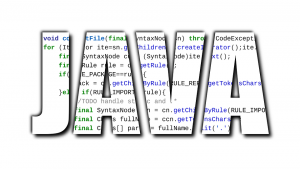The java Programmers expectations of people who use the application or have an interest in its performance are frequently not met when a Java application is established or an existing one is expanded with new feature capability. In some circumstances, post-development actions like in-depth JVM tuning or application performance tuning efforts can satisfy performance requirements. However, by taking proactive measures before or even during the implementation phase of the application or enhancement, these fire drills can be reduced.
Check out the Java course for beginners to learn more.
Importance of Performance Requirements
There are always some front-end criteria that need to be identified and addressed for every Java application, as well as for any improvements to an existing Java application. The majority of the time, these criteria are related to how the application or enhancement will perform. The capabilities of the recently added feature are an excellent illustration of a functional necessity. Performance standards are frequently not mentioned, or the goals are vague or insufficient. The performance measurement metrics for the application, the explanation of how the metrics are measured, and even the descriptions of performance certification and performance testing are infrequently stated or documented. Any performance engineer will tell you that it’s crucial to document performance needs at the development process’ requirements phase. And it is best if the requirements are as specific as possible.
Key Performance Objectives
There are occasions when the metrics (response time, throughput, and footprint) are already compiled while recording performance requirements. Ask more questions after using that as a starting point. The questions and topics that can help build improved performance requirements are described in this section.
First, each of the following performance qualities should be expressed as a requirement for an application’s performance:
- Throughput performance (How soon can the application do a specific well-defined unit of work?
- Latency performance (how long does it take after an input stimulus for a response to be received?)
- Memory footprint (How much RAM is required by the application?)
Answers to these queries should, at the very least, be known before moving on to the implementation phase.
- Throughput Performance
You should anticipate that a throughput performance requirement will sum up the needs in a sentence or two that reads something like, “The application shall perform ‘X’ number of operations or transactions per some unit of time.” This form can specify, for instance, that “the application shall perform 120 transactions per second.” Although not a strict throughput requirement, this is an excellent place to start.
- Latency Performance
Similar to a throughput performance requirement, a latency performance requirement should be initially reduced to its essentials. The phrase might read something like “the application shall respond to some type of external stimulus, or some kind of input, and return a response within a specified unit of time.” A performance criterion for latency might be, “The application shall produce a response to an incoming request within 50 milliseconds.” This is not necessarily a comprehensive latency performance requirement, as was the case with the example throughput requirement.
- Memory Footprint
Similar to requirements for memory, a memory footprint requirement indicates how much memory the application is permitted to utilise. The application shall not consume more than 10 GB of Java heap, for instance, is an example of a memory footprint or memory consumption requirement. Once more, this requirement gives Java plenty of room to fine-tune the memory usage.
The likelihood of achieving performance objectives when creating a new application or improving an existing one can be significantly increased by taking the time to fine-tune the requirements for throughput, reaction time latency, and memory footprint. You can better explain the performance requirements, how performance will be measured, and how performance will be tested to everyone involved by including people who have an interest in the application or the enhancement and holding discussions that delve deeper into the performance goals for the application or the enhancement. In other words, the performance requirements document will be clearer if the needs for each of the three performance attributes; throughput, latency, and memory footprint, are more specific.
Conclusion
Along with discussing the solutions to difficult questions like throughput, latency, and footprint, invest in creating a performance test plan. Share the test plan with others who are interested in the application after that. Include a description of the performance test plan’s execution and the methods used to calculate each performance metric in the test plan. There will frequently be differences in how different people interpret a performance requirement, how performance will be measured, and how the performance test will be carried out. Getting clarification on these at the requirements definition stage will significantly boost the likelihood that everyone will be content once the application development is finished and deployed.You can learn Java programming online if you are interested. There are online platforms available for you to learn.
























